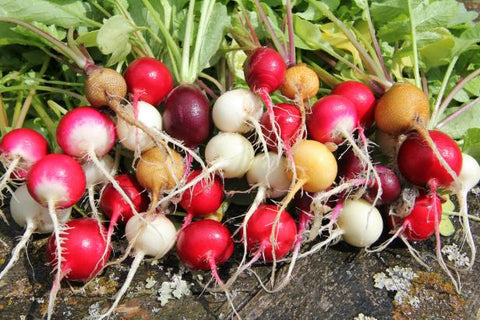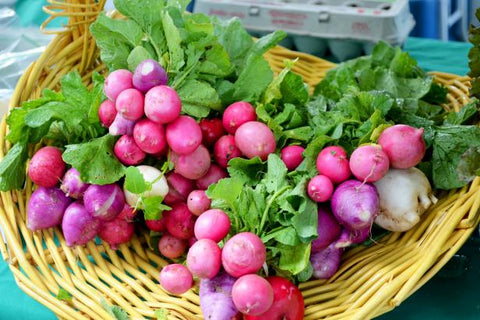Raised garden beds offer a canvas for creativity and expression in the world of gardening. With their elevated structure, they not only provide practical benefits but also serve as a platform for creating visually stunning landscapes that capture attention and inspire admiration. In this article, we'll explore the art of designing raised garden beds for maximum visual appeal, from understanding color theory to selecting the right plants and implementing thoughtful design principles.he following content also has some reference value for raised garden beds.
Understanding Color Theory
Basic principles of color theory
Color theory is the backbone of any successful garden design. It encompasses a spectrum of hues, including primary, secondary, and tertiary colors, each contributing to the overall composition. Primary colors - red, blue, and yellow - form the basis of all other colors, while secondary colors result from mixing primary colors, and tertiary colors from mixing primary and secondary colors. Understanding these relationships lays the groundwork for creating visually appealing combinations in the garden.
Applying color theory to garden design
In the realm of garden design, color theory guides the selection and arrangement of plants to create harmonious compositions. By employing complementary and contrasting colors strategically, gardeners can evoke specific moods and atmospheres within their outdoor spaces. Harmonious color schemes soothe the eye, while bold contrasts add drama and visual interest, transforming ordinary garden beds into captivating displays of color.
Choosing Plants for Colorful Combinations
Selecting plants with vibrant blooms
When it comes to infusing color into raised garden beds, selecting plants with vibrant blooms is key. Annual flowers offer a burst of seasonal color, providing ever-changing displays throughout the year. Meanwhile, perennial flowers offer longevity, with their blooms returning year after year, ensuring a lasting impact on the garden's visual appeal.
Incorporating foliage with interesting colors and textures
Beyond flowers, foliage plays a crucial role in adding depth and texture to garden compositions. Ornamental grasses sway gracefully in the breeze, adding movement and visual interest to raised beds. Meanwhile, plants with variegated leaves, showcasing a mix of colors and patterns, provide contrast against a backdrop of green, further enhancing the garden's overall aesthetic.
Planning Garden Layouts
Assessing sunlight and soil conditions
Before diving into planting, it's essential to assess the site's sunlight and soil conditions to ensure optimal growing conditions for selected plants. Understanding the needs of each plant, whether they thrive in full sun or shade, allows gardeners to make informed decisions when positioning them within the raised beds, maximizing their visual impact.

Designing planting schemes
Designing planting schemes involves more than just arranging plants haphazardly. By grouping plants according to color or texture, gardeners can create cohesive compositions that flow seamlessly throughout the garden. Establishing focal points and visual interest ensures that each raised bed becomes a captivating focal point within the larger landscape, drawing viewers in and inviting exploration.
Implementing Raised Garden Bed Designs
Building raised garden beds
Constructing raised garden beds requires careful consideration of materials, construction methods, and size. Whether opting for wood, metal, or composite materials, selecting the right materials ensures durability and longevity. Additionally, considering size and shape allows gardeners to create raised beds that complement the overall layout of the garden, harmonizing with existing structures and features.
Preparing soil and planting
Once the raised beds are in place, it's time to prepare the soil and plant according to the chosen design. Amending the soil with organic matter ensures optimal plant health and growth, providing essential nutrients for vigorous growth and vibrant blooms. Arranging plants thoughtfully within the raised beds brings the garden to life, transforming bare soil into a tapestry of color and texture.
Maintaining Colorful Garden Beds
Watering and fertilizing
Maintaining colorful garden beds requires ongoing care and attention, particularly when it comes to watering and fertilizing. Proper irrigation techniques ensure that plants receive adequate moisture without waterlogging the soil, promoting healthy root development and lush foliage. Similarly, regular fertilizer application provides plants with essential nutrients, supporting robust growth and abundant flowering throughout the growing season.
Pruning and deadheading
In addition to watering and fertilizing, pruning and deadheading are essential maintenance tasks for keeping colorful garden beds in top condition. Removing spent blooms not only tidies up the garden but also encourages continuous flowering, ensuring a steady supply of fresh blooms throughout the season. Shaping plants for aesthetic appeal further enhances the garden's visual impact, creating tidy, well-groomed beds that delight the eye.
Seasonal Considerations
Planning for year-round color
The successful garden design takes into account the changing seasons, planning for year-round color and interest. Choosing plants with different blooming seasons ensures that the garden remains vibrant and dynamic throughout the year, with blooms appearing in succession from spring to fall. Additionally, incorporating evergreens and winter interest plants ensures that the garden retains its visual appeal even during the colder months.

Adjusting planting schemes for seasonal changes
As the seasons change, so too should the planting schemes in colorful garden beds. Replacing annuals with seasonal favorites ensures that the garden remains fresh and exciting, with new colors and textures appearing throughout the year. Adding seasonal accents, such as pumpkins in the fall or flowering bulbs in the spring, adds a touch of seasonal flair, infusing the garden with visual variety and interest.
Incorporating Edible Plants
Integrating vegetables and herbs for color and function
Incorporating edible plants into raised garden beds not only adds color and visual interest but also serves a practical purpose. Selecting colorful varieties of vegetables, such as rainbow chard or purple cauliflower, adds a pop of color to the garden, transforming it into a feast for the eyes. Additionally, mixing edible and ornamental plants creates a diverse garden ecosystem, attracting beneficial insects and supporting pollinators.
Creating themed garden beds
Themed garden beds offer a unique opportunity to showcase creativity and personal style in the garden. Whether creating a culinary herb garden with colorful accents or a rainbow vegetable garden bursting with vibrant hues, themed beds add a touch of whimsy charm to the landscape. By selecting plants that align with the chosen theme, gardeners can create cohesive compositions that tell a story and captivate the imagination.
Enhancing Visual Appeal with Accessories
Adding decorative elements to raised beds
Accessories such as trellises, arbors, and decorative containers can elevate the visual appeal of raised garden beds, adding vertical interest and artistic flair. Trellises and arbors provide support for climbing plants, creating vertical accents that draw the eye upward and add dimension to the garden. Meanwhile, decorative containers and sculptures add personality and charm, transforming ordinary raised beds into works of art.
Incorporating pathways and borders
Creating defined spaces within the garden is essential for enhancing visual appeal and functionality. Incorporating pathways and borders around raised beds delineates different areas of the garden, guiding visitors on a journey of discovery. Using edging materials such as bricks or stones helps frame raised beds, creating a sense of structure and cohesion within the landscape.
Attracting Wildlife
Selecting plants to attract pollinators
Creating a biodiverse ecosystem in the garden is not only visually appealing but also beneficial for wildlife. Selecting plants that attract pollinators, such as bees and butterflies, helps support local ecosystems and promotes biodiversity. Choosing nectar-rich flowers and providing habitat for pollinators ensures that the garden remains a haven for wildlife throughout the year.

Creating a balanced ecosystem
Incorporating native plants into raised garden beds is essential for creating a balanced ecosystem that supports a variety of wildlife. Native plants provide food and habitat for birds, insects, and other wildlife, contributing to the overall health and vitality of the garden. Balancing pest control with biodiversity ensures that the garden remains in harmony with nature, supporting a thriving ecosystem that benefits both plants and wildlife.
Conclusion
In conclusion, designing raised garden beds for visual appeal is both an art and a science. By understanding color theory, selecting the right plants, and implementing thoughtful design principles, gardeners can create vibrant and dynamic landscapes that delight the senses and inspire admiration. Whether aiming for bold contrasts or subtle harmonies, incorporating these principles into raised bed planting plans ensures that every garden becomes a masterpiece of color and beauty.









